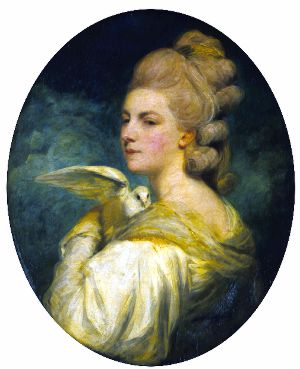Courtesan
Courtesan refers to a person who is often a part of a court or the companion of the wealthy and powerful, providing them with companionship, entertainment, and sometimes sexual intimacy in exchange for money, gifts, or influence. Historically, courtesans were more sophisticated and cultured than the average prostitute, often having education and artistic skills that made them companions for the elite rather than mere providers of sexual services.
History[edit | edit source]
The concept of the courtesan has existed in various cultures and civilizations throughout history, including ancient India, where they were known as ganikas, in ancient Greece as hetairai, in Renaissance Italy where they reached a peak of influence and respectability, and in Edo period Japan, where they were known as oiran. Unlike prostitutes, courtesans were renowned for their beauty, intelligence, and abilities in the arts, such as music, dance, and poetry, which allowed them to move freely among the upper echelons of society.
Roles and Social Status[edit | edit source]
Courtesans held a unique position in society. They were not merely objects of sexual desire but also participated in high society's social life, often playing significant roles in politics and culture. In many cases, courtesans could influence their wealthy and powerful patrons, making them key figures in political and social circles. Their education and wit allowed them to engage in intellectual conversations with the elite, further cementing their status as valued companions.
Famous Courtesans[edit | edit source]
Throughout history, there have been many famous courtesans who have left their mark on society and culture. For example, in Renaissance Italy, Veronica Franco was celebrated not only for her beauty but also for her literary talents. In France, Madame de Pompadour became the chief mistress of King Louis XV and played a significant role in promoting the arts and influencing French politics and culture.
Decline[edit | edit source]
The social status and acceptance of courtesans began to decline with the rise of Victorian morality in the 19th century, which emphasized strict codes of sexual conduct and the sanctity of marriage. The advent of feminism and changes in social attitudes towards sex and morality in the 20th century further diminished the role and influence of courtesans in society.
Modern Times[edit | edit source]
In contemporary times, the term courtesan has largely fallen out of use, with the concept being replaced by other forms of companionship and sex work. However, the historical role of courtesans continues to be a subject of fascination in literature, film, and art, reflecting the complex interplay between sexuality, power, and culture.
| Courtesan Resources | ||
|---|---|---|
|
| |
Translate to: East Asian
中文,
日本,
한국어,
South Asian
हिन्दी,
Urdu,
বাংলা,
తెలుగు,
தமிழ்,
ಕನ್ನಡ,
Southeast Asian
Indonesian,
Vietnamese,
Thai,
မြန်မာဘာသာ,
European
español,
Deutsch,
français,
русский,
português do Brasil,
Italian,
polski
Navigation: Wellness - Encyclopedia - Health topics - Disease Index - Drugs - World Directory - Gray's Anatomy - Keto diet - Recipes
Search WikiMD
Ad.Tired of being Overweight? Try W8MD's physician weight loss program.
Semaglutide (Ozempic / Wegovy and Tirzepatide (Mounjaro / Zepbound) available.
Advertise on WikiMD
WikiMD is not a substitute for professional medical advice. See full disclaimer.
Credits:Most images are courtesy of Wikimedia commons, and templates Wikipedia, licensed under CC BY SA or similar.Contributors: Prab R. Tumpati, MD






